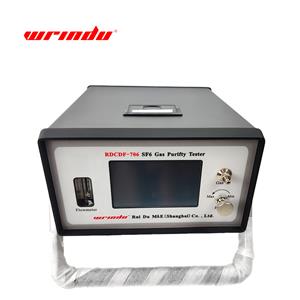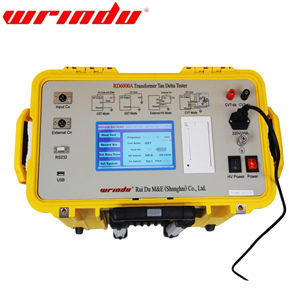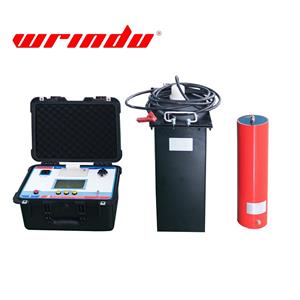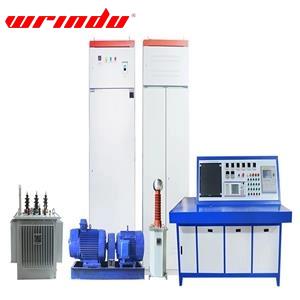How Do Temperature and Humidity Affect Tan Delta Test Results?
How Does Temperature Influence Tan Delta?
Higher temperature increases the conductivity of insulating materials, raising the resistive component
, which leads to a higher tan δ.
Temperature changes the polarization and depolarization of the dielectric, affecting the capacitive current and thus tan δ.
At lower temperatures, the resistive component is smaller, resulting in a lower tan δ, but polarization delays may affect the measurement.
How Does Humidity Impact Tan Delta?
Water ingress increases the conductive path in materials, especially at interfaces, raising IR and causing an increase in tan δ.
Humidity can also change the dielectric constant and polarization characteristics, influencing both the size and phase of .
How Can Tan Delta Results Be Standardized and Compared?
Uniform Test Conditions: Conduct tests under controlled temperature and humidity, or measure at multiple points under consistent conditions for comparison.
Temperature Compensation: Report the actual test temperature and provide temperature-compensated tan δ, or provide the equivalent value at standard temperatures (e.g., 20°C, 40°C, 75°C). Use empirical curves or linear/non-linear fitting for correction.
Humidity Recording and Classification: Track relative humidity (RH) and changes in dielectric moisture before and after testing. Include humidity impact coefficients in reports. Compare data with historical records under similar humidity levels.
Multi-Point Comparison: If conditions cannot be controlled, use historical data as a baseline and compare current test results under similar temperature and humidity to assess changes. Avoid relying on absolute values across varying conditions.
Temperature and Humidity Zones: Present results in tables or graphs showing temperature, humidity, tan δ, and corresponding ratio at each test point.
Provide uncertainty ranges (e.g., ±Xdddd of tan δ) caused by temperature and humidity variations to assess the significance of changes.
How Can Measurement Uncertainty Be Evaluated?
Consider the impact of temperature and humidity on tan δ when interpreting results.
What Are the Recommended Practices for Field Testing?
Temperature and Humidity Recording Plan: Record temperature and humidity during testing and perform baseline tests in stable conditions. The following are examples of recording plans.
| Item | Value/Unit | Recordings |
|---|---|---|
| T (Temperature) | °C | |
| RH (Relative Humidity) | dddd | |
| Vtest | kV (or V) | |
| f | Hz | |
| t | s | |
| tanδ_raw | – | |
| tanδ_Tref | – | |
| V/Vref | – | |
| kT | 1/°C | |
| Notes | – |
Temperature-Humidity Correction Models: Initially, use linear models for temperature corrections. As more data is collected, refine the model for more accurate predictions.
Long-Term Monitoring: Regularly test the same equipment under similar conditions to track trends in aging or early warning signs of faults.
Combining Test Results: Cross-check Tan Delta with other tests like Power Factor, SFRA, and Partial Discharge to avoid relying on a single indicator.
Clear Reporting: Clearly document test conditions, correction methods, and comparison baselines so that future tests can be reproduced and compared.
V_{text{test}}
How Should Test Data Be Presented?
Raw Conditions: Temperature T = 25°C, RH = 60dddd, Test Voltage , Frequency f=0.05−0.1 Hz, Test Duration .
Corrected Results: Report raw tan δ and the corrected value at a reference temperature (e.g., 20°C) using the temperature coefficient or the established temperature-tan δ curve.
Comparison: Compare the current tan δ with historical values, showing percentage change at the same temperature and humidity conditions.
Conclusion: State the health condition based on current test conditions, any required interventions, and suggestions for future testing.
What Should Be Considered During Testing?
Some materials may exhibit non-linear behavior at extreme temperatures, so avoid over-extrapolating corrections.
Ensure that temperature compensation features on testing equipment are calibrated and document calibration status.
If test conditions change during measurement, restart the test or note the impact of changing conditions in the results.
Why choose Wrindu's Tan Delta Tester?
Temperature and Humidity Compensation: The RD6000A is designed to maintain accuracy and reliability even under varying temperature and humidity conditions, making it ideal for real-world, field-based tan delta testing where environmental factors can affect results.
Innovative Technology: Breaks away from traditional bridge measurement methods by using frequency conversion power supply technology and modern electronics for automatic frequency conversion, analog-to-digital conversion, and data processing.
High Accuracy and Fast Testing: Provides quick, highly accurate tan delta measurements with interference resistance, ensuring reliable results even in challenging field environments.
Fully Digital and Automated: Fully digital automation allows for straightforward operation, reducing manual intervention and improving testing efficiency.
High Voltage Capability: Equipped with a high-capacity switching power supply that supports output voltages up to 10kV, perfect for precise transformer tan delta testing.
Noise Suppression: Built-in 50Hz noise suppression ensures stable operation in high-interference environments, providing consistent results even in electrically noisy surroundings.
Field-Optimized Design: Engineered for field use, the RD6000A offers exceptional performance in tough environments, delivering a robust, reliable solution for fast and accurate tan delta testing on-site.
Find information about Tan Delta Tester.
Related Articles
You may ask about Tan delta Test.
Ten important points about tan delta test of transformer.




